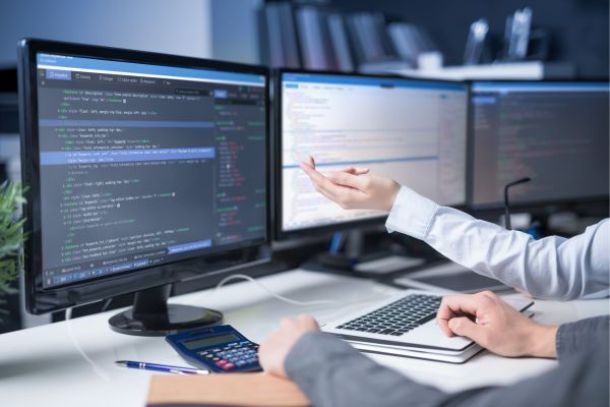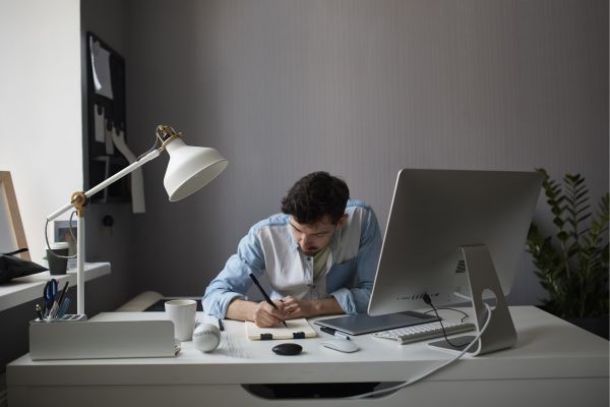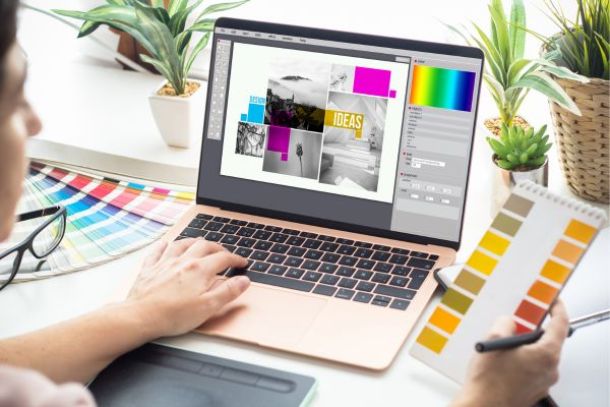Exploring Design Trends: Inspiration and Innovation
Exploring Design Trends: Inspiration and Innovation
Design trends play a vital role in shaping the aesthetics and functionality of products, services, and experiences. They reflect the current cultural, technological, and societal influences that impact the way we perceive and interact with the world around us. In this article, we will delve into the exciting realm of design trends, exploring their significance, and discussing how they inspire and drive innovation. Join us on this journey of exploration as we uncover the key trends that are shaping the design landscape today.
The Importance of Design Trends
Design trends act as a barometer of the collective consciousness, reflecting the changing preferences and desires of society. They provide designers and creatives with insights into what resonates with people and what captures their attention. By staying updated with design trends, professionals can create relevant and compelling designs that evoke emotional responses, effectively communicate messages, and enhance user experiences. Design trends also enable businesses to stay competitive by aligning their offerings with the current zeitgeist.
Technology and Design
One of the primary drivers of design trends is technology. Technological advancements open up new possibilities for creative expression and shape the way we interact with products and services. For instance, the rise of augmented reality (AR) and virtual reality (VR) has revolutionized the fields of gaming, architecture, and even fashion. Designers are now exploring ways to integrate these immersive technologies into their creations, providing users with unique and engaging experiences. Technology also influences the aesthetics of design, with sleek and minimalist interfaces gaining popularity in response to the rise of mobile devices and touchscreens.
Sustainability and Ethical Design
In recent years, there has been a significant shift towards sustainability and ethical design practices. As environmental concerns become more prominent, designers are embracing eco-friendly materials, incorporating recycling and upcycling principles, and prioritizing sustainable manufacturing processes. Ethical design focuses on creating products that are inclusive, accessible, and considerate of diverse user needs. This trend reflects a growing awareness and responsibility within the design community to minimize the negative impact of products and services on the environment and society as a whole.
Minimalism and Simplicity
The philosophy of “less is more” continues to inspire designers across various disciplines. Minimalism and simplicity have become prominent design trends, characterized by clean lines, ample white space, and a focus on essential elements. This approach aims to declutter designs, improving visual clarity and enhancing user experiences. Minimalistic design also aligns with the desire for more sustainable and eco-friendly solutions, as it promotes the efficient use of resources and materials.
Biophilic Design
As urbanization and technology increasingly disconnect people from nature, biophilic design seeks to reintegrate the natural world into our built environments. This trend emphasizes the incorporation of natural elements such as plants, natural light, and organic materials into interior and architectural designs. Biophilic design has been shown to improve well-being, productivity, and creativity, making spaces more inviting and harmonious. By reconnecting with nature, designers tap into the innate human desire for a connection to the natural world.
Bold Colors and Gradients
Design trends often reflect the cultural and emotional climate of society. In recent years, there has been a resurgence of bold colors and gradients in design, departing from the previous dominance of minimalistic palettes. Vibrant and saturated hues are being used to evoke emotions, create visual interest, and make designs stand out in a crowded digital landscape. Gradients, in particular, add depth and dimension to flat designs, providing a dynamic and engaging visual experience.
Typography and Custom Fonts
Typography is a powerful design element that sets the tone and personality of a brand or project. In recent years, there has been a surge in the use of custom fonts and creative typography. Designers have been exploring unique and expressive letterforms to differentiate their designs and create memorable experiences. Custom fonts allow designers to convey specific moods, reinforce brand identities, and enhance the overall aesthetic appeal. From playful and hand-drawn scripts to bold and geometric sans-serifs, typography trends continue to evolve, providing designers with endless possibilities for creative expression.
Mixed Media and Collage
In the age of digital media, designers are increasingly blurring the lines between different artistic mediums. Mixed media and collage-inspired designs combine elements from various sources, such as photography, illustrations, textures, and typography, to create visually dynamic and eclectic compositions. This trend celebrates the juxtaposition of different styles and influences, fostering creativity and adding a touch of whimsy to design projects.
User-Centered and Inclusive Design
Design trends are not solely focused on aesthetics but also on improving user experiences and inclusivity. User-centered design places the needs and preferences of the end-users at the forefront of the design process. By conducting thorough research, gathering user feedback, and considering accessibility requirements, designers can create products and services that are intuitive, inclusive, and delightful for all users. This trend reflects the growing recognition of the importance of empathy and understanding in design practice.
Retro and Nostalgic Design
Nostalgia often serves as a source of inspiration for design trends, as it taps into our collective memory and evokes emotions associated with the past. Retro design styles, influenced by different eras such as the 80s or 90s, have made a comeback in recent years. From vibrant color schemes and geometric patterns to pixel art and vintage typography, designers are embracing nostalgia to create designs that resonate with a sense of familiarity and evoke a warm, sentimental response.
Abstract and Organic Shapes
In recent years, there has been a shift towards using abstract and organic shapes in design. Departing from traditional geometric forms, designers are incorporating irregular, fluid shapes that mimic elements found in nature. These shapes add a sense of dynamism and playfulness to designs, breaking away from rigid structures and providing a more visually interesting experience. Abstract and organic shapes also allow for unique compositions and can be used to create visual hierarchy and guide users’ attention.
Interactive and Microinteractions
Design trends are increasingly focused on creating interactive experiences that engage and captivate users. Interactive elements and microinteractions are becoming more prevalent in digital interfaces, providing feedback, and enhancing user engagement. Microinteractions are small, subtle animations or responses that occur in response to a user’s action, such as a button changing color when clicked. These interactions add depth and delight to designs, making them more intuitive and engaging.
Authentic and Personalized Visuals
As users seek more authentic and relatable experiences, designers are incorporating personalized visuals into their designs. Custom illustrations, hand-drawn elements, and real-life photography are being used to create a sense of authenticity and connection. By moving away from stock imagery and generic visuals, designers can establish a unique visual identity for brands and create designs that resonate with users on a personal level.
Dark Mode and High Contrast
Dark mode has gained popularity as a design trend, offering a visually striking and energy-saving alternative to traditional light interfaces. Dark backgrounds with high contrast elements not only reduce eye strain but also provide a modern and sleek aesthetic. The use of dark mode has become more prevalent across various digital platforms, including websites, mobile applications, and operating systems.
3D and Immersive Experiences
Advancements in technology have opened up new possibilities for creating immersive and three-dimensional experiences. 3D graphics, virtual reality (VR), and augmented reality (AR) are being integrated into various design fields, including gaming, architecture, product design, and marketing. These technologies allow for interactive and realistic experiences, pushing the boundaries of design and enhancing user engagement.
Dynamic and Data-Driven Infographics
Infographics continue to be a popular way of presenting information in a visually engaging and easy-to-understand format. However, traditional static infographics are evolving into dynamic and data-driven designs. By incorporating animations, interactive elements, and real-time data updates, designers can create infographics that are not only visually appealing but also provide a more dynamic and engaging user experience.
Retrofuturism
Retrofuturism is a design trend that combines elements from the past with futuristic aesthetics. It often draws inspiration from the optimistic visions of the future from the mid-20th century. Retrofuturistic designs feature vintage elements, such as retro typography and color palettes, combined with futuristic and sci-fi-inspired elements. This trend creates a unique and nostalgic yet forward-looking visual style that captivates users.
Conclusion
Design trends are constantly evolving, driven by technological advancements, societal changes, and the quest for innovative and meaningful experiences. By embracing these trends, designers can stay at the forefront of their field, create designs that resonate with users, and drive innovation in their respective industries. From sustainable and ethical design practices to immersive technologies and personalized experiences, the design landscape is filled with exciting possibilities. So, let’s continue to explore, experiment, and push the boundaries of design to shape a more inspiring and user-centric future.


